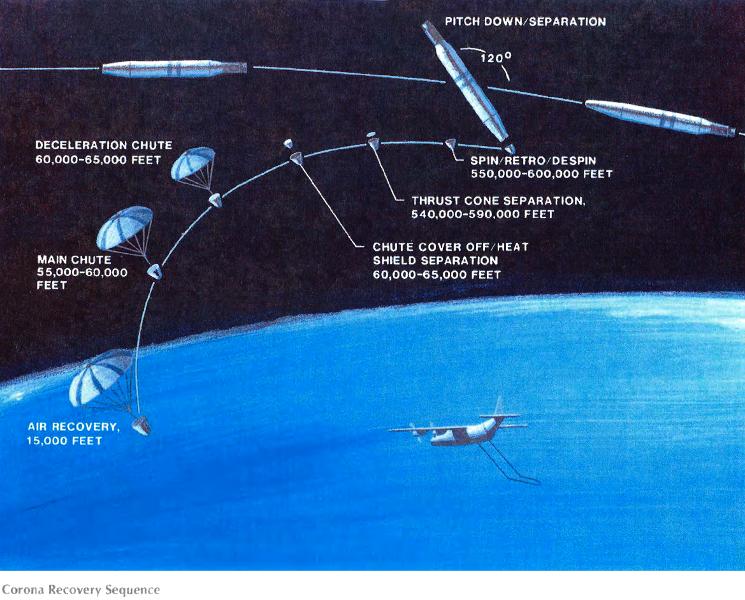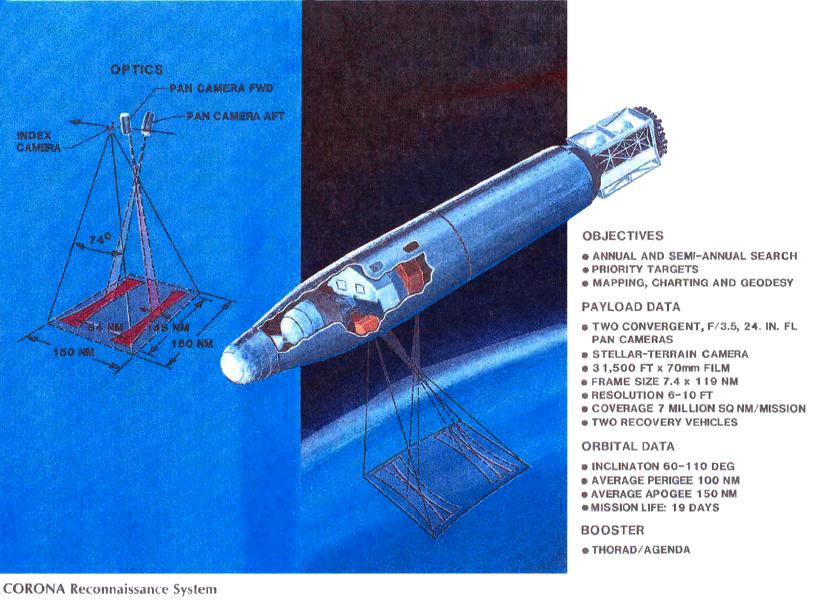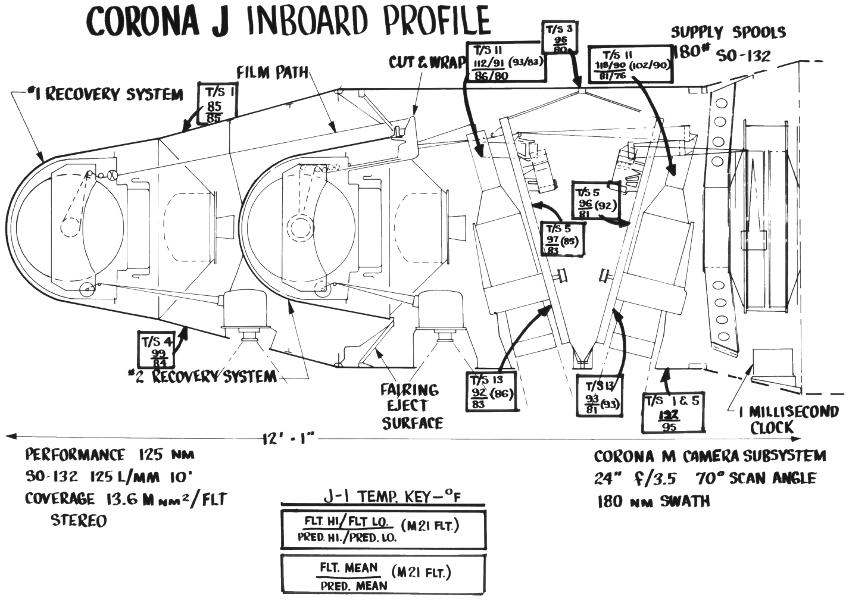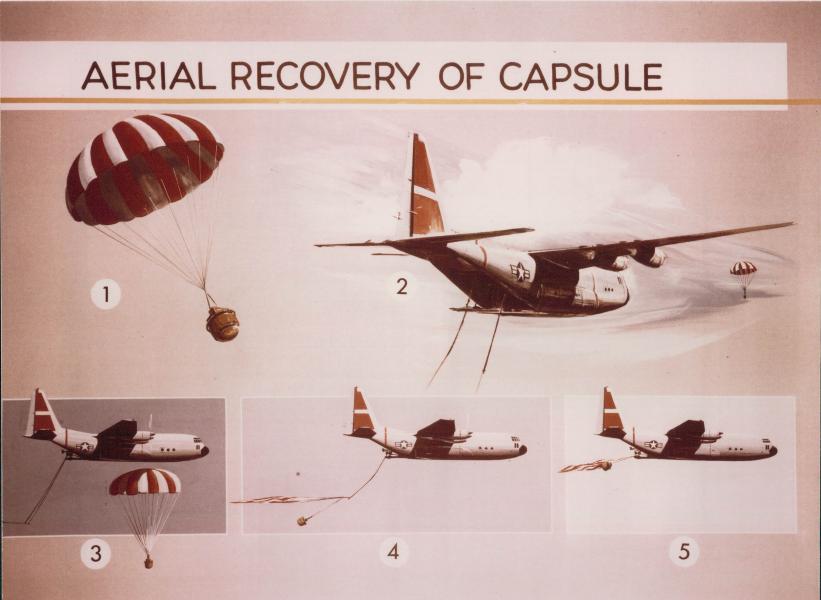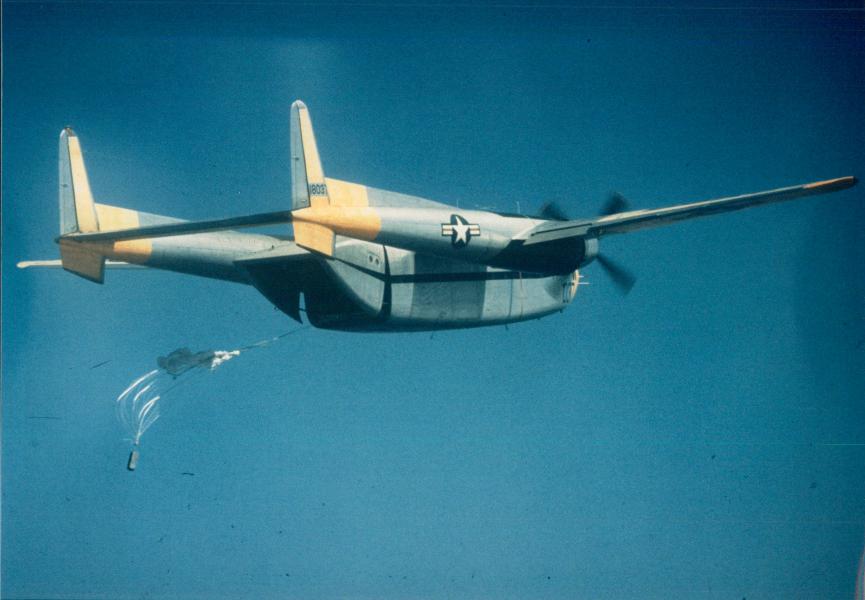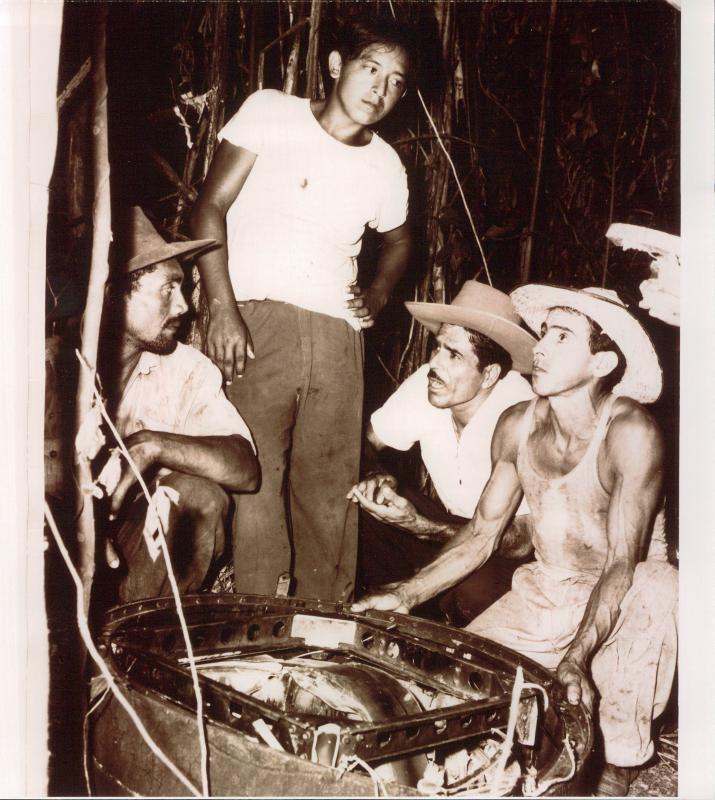Corona Photographic Surveillance Satellites
The Corona program was a series of U.S. photographic surveillance satellites used from the late 50s through the early 70s. These spy satellites were designed to assess how rapidly the Soviet Union was producing long-range bombers and ballistic missiles, and where they were being deployed. The programs' worldwide photographic coverage was also used to produce maps and charts for the Department of Defense and other U.S. government mapping programs.
The satellites used film canisters that were returned to earth in capsules (a.k.a. "buckets") for evaluation. These capsules were designed to be recovered by a specially equipped aircraft during parachute descent, but were also designed to float to permit recovery from the ocean.
Corona recovery sequence
Click image for a 1169x941 pixel version of this image in a new window.
Taken from page 58 (p. 66 in the PDF) of The CORONA
Story [direct link to 7.8 meg PDF] available from the National
Reconnaissance Office's Declassified Records
Frequently Requested Records page.
Extraction and restoration by heroicrelics.
The first launches of the Corona program were announced by the USAF as satellites in the Discoverer series. This Discoverer program, then described as a satellite technology development effort, was in reality mainly a cover for the Corona photographic missions. Following Discoverer 38, the Discoverer program was terminated, and a veil of secrecy was placed on all photographic surveillance missions and related test missions.
The "KH" (Key Hole) designation is used to refer to all photographic reconnaissance satellites. The number following the "KH" designation indicates what type camera system was used on the satellite. This designation system came into use during 1962 with the 4th camera system, with its predecessors retroactively identified as KH-1, KH-2, and KH-3. The Corona program encompassed KH-1, KH-2, KH-3, KH-4, KH-4A, and KH-4B.
Early systems (KH-1, KH-2, and KH-3) carried a single panoramic camera while later systems (KH-4, KH-4A, and KH-4B) carried two panoramic cameras looking 30 degree apart (one looking forward, the other looking rear). Early systems operated with a single bucket, while later systems were configured with two buckets; the KH-4A was the first satellite with multiple film buckets. Additionally, the fore and aft camera's film were packaged separately for missions that carried twin panoramic cameras.
Corona reconnaissance system
Click image for a 1175x862 pixel version of this image in a new window.
Taken from page 122 (p. 130 in the PDF) of The CORONA
Story [direct link to 7.8 meg PDF] available from the National
Reconnaissance Office's Declassified Records
Frequently Requested Records page.
Extraction and restoration by heroicrelics.
As shown in the diagram below, film was routed from supply spools at the far right to the cameras at the center of the satellite and then to pick-up spools in the recovery buckets at the forward end of the satellite:
Corona J inboard profile
Click image for a 2852x2016 pixel version of this image in a new window.
Taken from the NRO's Declassified Collection of CORONA, ARGON, and LANYARD Photographs page, ID
#24.
Restoration by heroicrelics.
After separation and reentry, the film bucket was recovered in mid-air by Air Force cargo planes such as C-119s and C-130s:
Artist's impression of aerial recovery of Corona film bucket
Click image to open this image's page at the NRO's Declassified
Collection of CORONA, ARGON, and LANYARD Photographs page.
A C-119 training for the aerial recovery of a Corona film bucket
Click image to open this image's page at the NRO's Declassified
Collection of CORONA, ARGON, and LANYARD Photographs page.
Corona mission 1005, launched 27 April 1964, suffered an embarrassing end. It launched successfully, but after 350 camera operations the film broke. The Agena's power supply failed, and the capsule ignored signals to deboost and reenter. Initial calculations predicted that, after the satellite's orbit would naturally decay, it would impact the Pacific west of South America. Later refinements to the calculations predicted that some debris would land in Venezuela. The satellite reentered 26 May 1964.
On 1 August 1964, a Venezuelan commercial photographer reported to the U.S. Army Attache in Caracas that an object which appeared to be part of a space vehicle had been recovered, nearly a month earlier, 500 miles south of Caracas in a remote rural region near the Columbian border. The object was marked with "United States" and "Secret"
Army representatives eventually were dispatched to investigate. They found that two workers found the film bucket on July 7. Their employer moved it to his property and put it up for sale. There were no worthwhile offers, so it was partially dismantled, with various pieces being used for household utensils and toys for children; one farmer repurposed the parachute lines for a horse harness. Photos of the capsule had been printed in a local newspaper.
CIA agents collected the debris, which had eventually been collected by the Venezuelan Army. After the incident, future Corona vehicles no longer carried classification markings, instead carrying a notice of reward for return in eight languages.
Venezuelan villagers posing with the film bucket from Corona mission 1005.
Click image to open this image's page at the NRO's Declassified
Collection of CORONA, ARGON, and LANYARD Photographs page.
The bulk of the text on this page was taken, most of it verbatim, from JPL's Mission and Spacecraft Library - Corona page. The description of Corona mission 1005 was largely taken from The CORONA Story [direct link to 7.8 meg PDF] available from the National Reconnaissance Office's Declassified Records Frequently Requested Records page.

